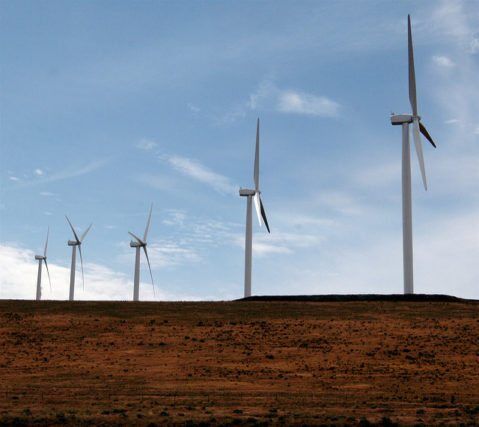

Energy
International Collaborative Research Advancing Wind Energy According To New Report
2015 was a record-setting year in terms of wind-generated electricity as it met close to 4% of the world’s electricity demand with over 63 GW of new wind power capacity installed, according to IEA Wind’s latest annual report.
Worldwide capacity stood at about 433 GW of wind power and more than 85% resides in the countries represented in the International Energy Agency Wind (IEA Wind) Technology Collaboration Programme (TCP).
The IEA Wind TCP 2015 Annual Report documents the activities and accomplishments of its 24 member countries and organisations, and the work of the 15 cooperative research tasks that form a global network of researchers and policy experts focused on advancing wind energy development.
The latest report shows how wind energy is consolidating a leading position in terms of growth, cost and research and development at a global scale. New investors worldwide are embracing wind energy as a profitable and growing sector which is considered low risk. The work developed by IEA Wind shows that wind power generation costs have dropped to a point where they are competitive with conventional generation costs in a growing number of cases, and with clear potential of further cost reductions in sight.
Collaborative research efforts include supporting wind deployment offshore and in cold climates, work to understand the environmental impacts and cost of wind energy, work to address issues of grid integration, systems engineering and aerodynamic modelling, and development of analysis tools and test standards to advance the technology and reduce the costs of wind energy.
In the UK, wind capacity continued to increase throughout 2015, with land-based capacity increased to over 8GW and offshore capacity increased to over 5GW. Growth in offshore wind installed capacity is expected to reach 10GW by 2020. The UK generates more electricity from offshore wind than any other country in the world, meeting around 5% of annual UK electricity requirements.
Ignacio Marti, Innovation & Research Director for the Offshore Renewable Energy (ORE) Catapult and Chair of the IEA Wind TCP said: “Continued growth in wind energy’s contribution to electricity supplies will depend on solving the critical technology and deployment challenges of the future, and the IEA Wind member countries will continue to have a hugely significant role in driving forward wind energy’s further development. Major international collaborative research and development programmes and activities are more essential than ever to advance wind energy’s vital contribution to global energy security.”
The annual report’s Executive Summary provides an overview and analysis of the research, development and deployment contributions of the 21 member countries, the Chinese Wind Energy Association, the European Commission, and WindEurope.


 Environment10 months ago
Environment10 months agoAre Polymer Banknotes: an Eco-Friendly Trend or a Groundswell?

 Environment11 months ago
Environment11 months agoEco-Friendly Home Improvements: Top 7 Upgrades for 2025

 Features9 months ago
Features9 months agoEco-Friendly Cryptocurrencies: Sustainable Investment Choices

 Features10 months ago
Features10 months agoEco-Friendly Crypto Traders Must Find the Right Exchange




























